Gluten-Free Pizza Dough
Updated
If there’s one gluten-filled thing I miss, it’s pizza. But I don’t feel like I’m missing out anymore with this easy recipe for gluten-free pizza dough. Make homemade pizza with a thick and chewy gluten-free pizza crust.
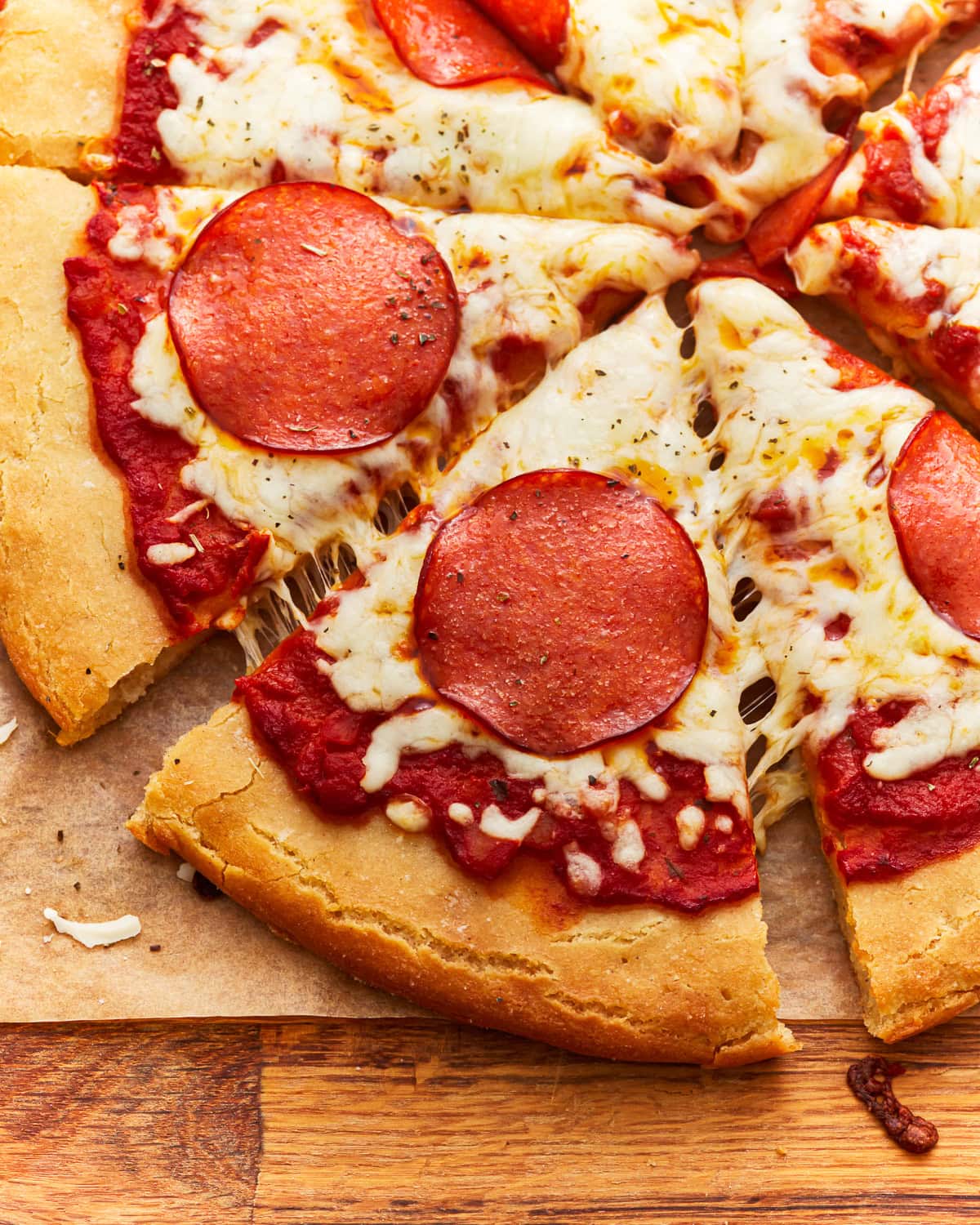
Gluten-Free Pizza Dough Recipe
I’ve tested this recipe countless times to get the texture just right—soft in the center with a crisp, golden edge. It reminds me of the thick, chewy slices I grew up loving, just without the gluten. The dough comes together quickly in one bowl, and because there’s no kneading, it’s perfect for weeknights or anytime a pizza craving hits. Whether you’re topping it with classic pepperoni or loading it with veggies, this crust holds up beautifully.
Gluten-Free Pizza Dough

Ingredients
Gluten-Free Pizza Dough
- 2 1/2 cups gluten-free all-purpose flour with xanthan gum, We like Pillsbury gluten-free flour or Better Batter gluten-free flour. Not all gluten-free flours are recommended for yeast baking. You may experience different baking results depending on the gluten-free flour blend you choose.
- 1 tbsp baking powder
- 1 tsp salt
- 1 packet rapid yeast/instant yeast, or 2 1/4 teaspoons of rapid yeast/instant yeast
- 1 1/2 cups warm water , 110°-115°
- 1 tbsp granulated sugar
- 1/2 cup olive oil
- 1 tsp apple cider vinegar
- 2 tbsp gluten-free all-purpose flour, for dusting
Instructions
Gluten-Free Pizza Dough
- Preheat your oven to the proofing setting. If your oven does not have a proofing setting, heat the oven 200°F. Once it gets to 100°, turn off the oven.
- Combine the gluten-free all-purpose flour, instant yeast, baking powder, and salt in the bowl of a stand mixer fitted with the paddle attachment.
- Warm the water in the microwave for 30-45 seconds to 110°-115°F. I use a thermometer to check the temperature of the water. If the water is too hot, it will kill the yeast.
- Add the sugar to the warm water and stir until it is dissolved.
- Pour the warm sugar water into the gluten-free flour mixture and mix with your mixer on low.
- Add the olive oil and apple cider vinegar to the gluten-free dough mixture and mix on low speed for 1-2 minutes, or until the dough starts to form. The gluten-free pizza dough will be very sticky.
- Place the dough in a greased ovenproof bowl and cover with plastic wrap. Cover the dough with a kitchen towel and place in your warm oven for 30 minutes to rise.
- Remove the dough from the oven and preheat the oven to 425° F.
- Pour 1 tablespoon of gluten-free all-purpose flour onto a large sheet of parchment paper. Spread the gluten-free flour into a circle the size of the pizza crust (15″).
- Turn the bowl over on top of the floured parchment paper. Sprinkle 1 tablespoon of gluten-free all-purpose flour on top of the dough. Gently pat the dough ball in an outward motion. Work from the middle and push to spread the dough out to the edge to make a 15″ circle. Use your fingertips to press down into the dough to form the crust edge. Use your hands to finish shaping and rounding the edges.
To Bake Gluten-Free Pizza
- Place the parchment paper with the dough on a pizza pan or baking sheet. Bake for 15 minutes.
- Remove the crust from the oven and top with the gluten-free pizza sauce, cheese, and your favorite toppings.
- Bake the crust for an additional 10-15 minutes, until the cheese is melted and the crust is golden brown.
- Store leftovers in an air-tight container and refrigerate. Reheat leftovers in the oven or microwave.
Notes
- To freeze: Let the dough fully rise before you freeze it. Wrap the dough in plastic wrap and place it in a plastic freezer bag. The dough can be frozen for up to three months. Thaw the dough in the refrigerator overnight before you use it.
- To par-bake: It is also easy to freeze and have a half-baked crust on hand, just like the packaged frozen pizza crust from the grocery store. Just follow the recipe instructions through the gluten-free pizza dough dough steps below (1-10). Bake the gluten-free pizza crust for 15 minutes in a 425°F oven. Allow it to cool completely. Wrap the parbaked gluten-free pizza crust tightly with plastic wrap or foil made for freezing. The parbaked gluten-free pizza crust can be frozen for up to a month. When you are ready to make your gluten-free pizza, just add your toppings and bake for 10-15 mins at 425°F.
- Mama says”Always check your labels!”
Nutrition
Nutrition information is automatically calculated, so should only be used as an approximation.
Gluten-Free Pizza Dough Step-by-Step
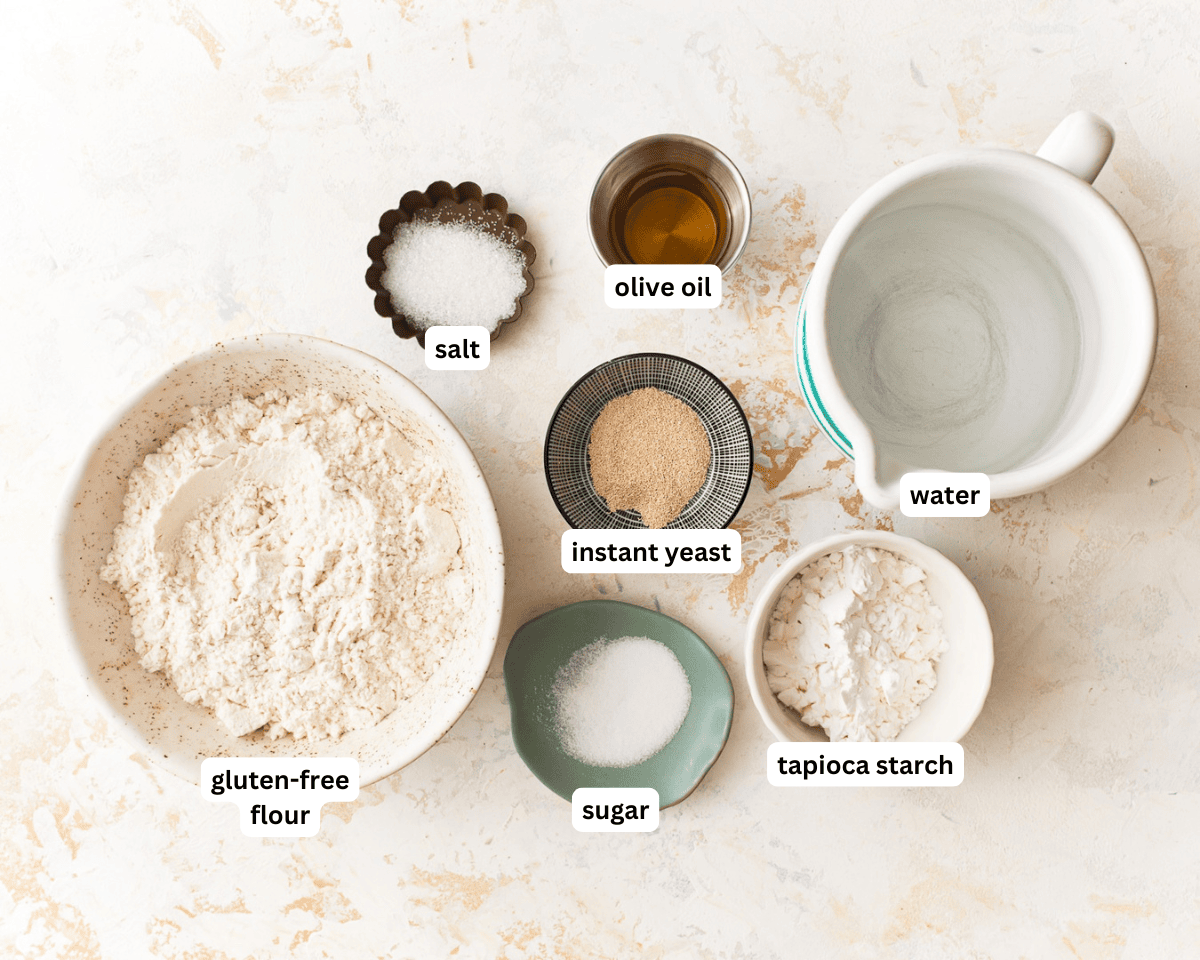
Gather the ingredients: Gather all the ingredients together. Preheat your oven to the proofing setting. If your oven doesn’t have one, preheat it to 200°F. Once it reaches 100°F, turn the oven off.
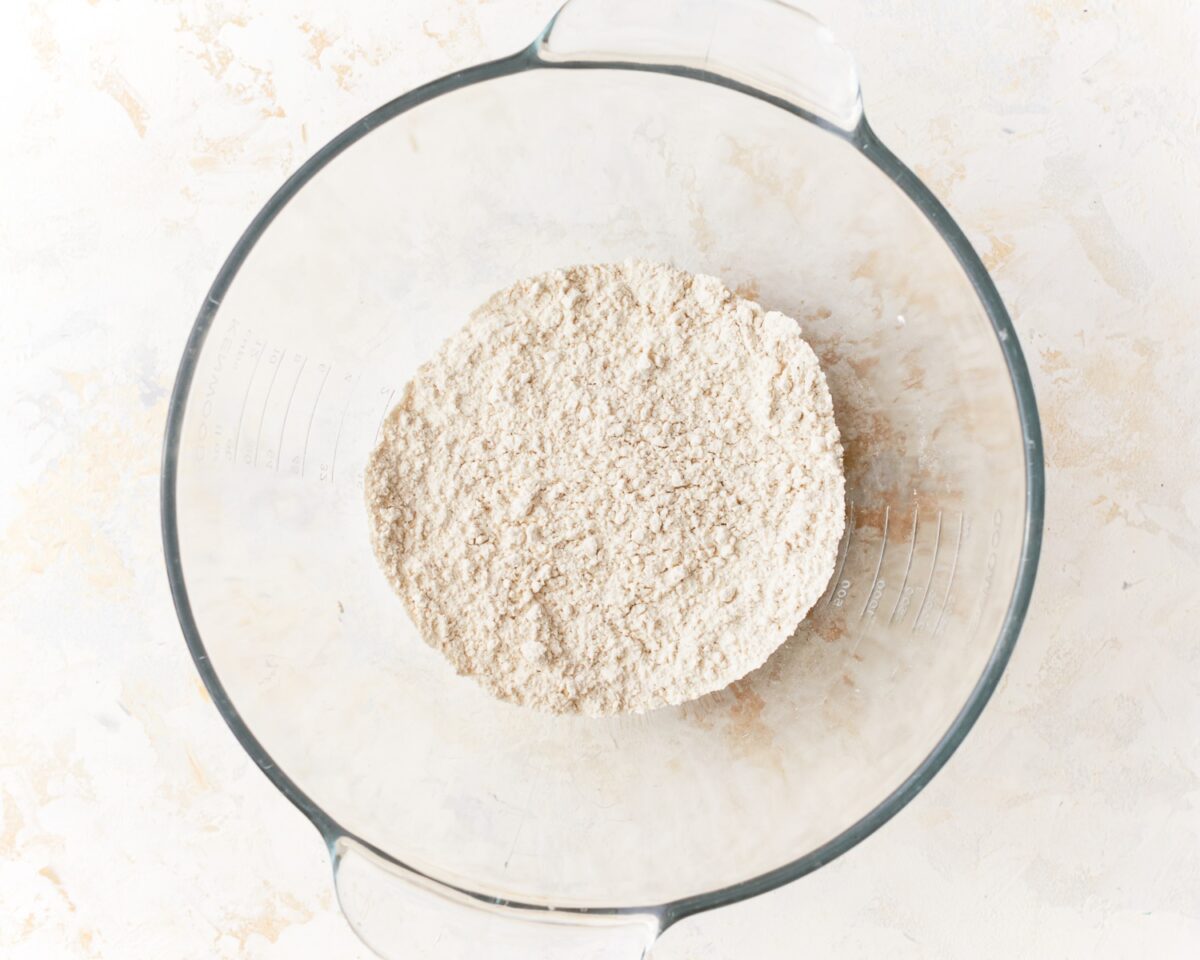
Mix the dry ingredients: In the bowl of a stand mixer fitted with the paddle attachment, combine 2 1/2 cups of gluten-free all-purpose flour with xanthan gum (I recommend Pillsbury or Better Batter), 1 tbsp of baking powder, 1 tsp of salt, and 1 packet (or 2 1/4 tsp) of rapid rise/instant yeast.

Activate the yeast: Microwave 1 1/2 cups of water for 30–45 seconds until it reaches 110°F to 115°F. Use a kitchen thermometer to check the temperature—if it’s too hot, it can kill the yeast. Stir 1 tbsp of granulated sugar into the warm water until dissolved.

Combine the sugar water: With the mixer on low speed, slowly pour the sugar water into the flour mixture.
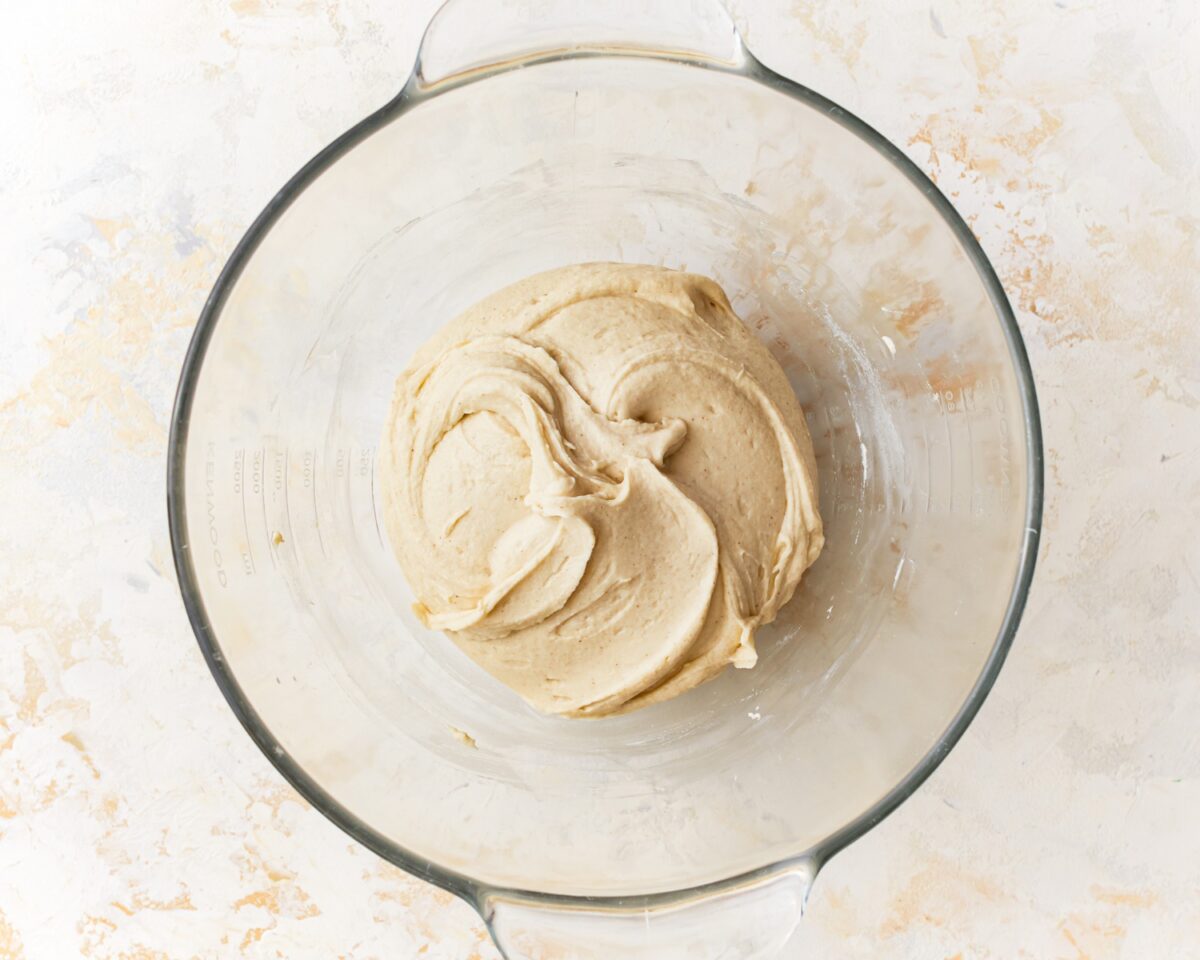
Add remaining wet ingredients: Add 1/2 cup of olive oil and 1 tsp of apple cider vinegar to the bowl. Mix on low for 1–2 minutes, or until a sticky dough forms.
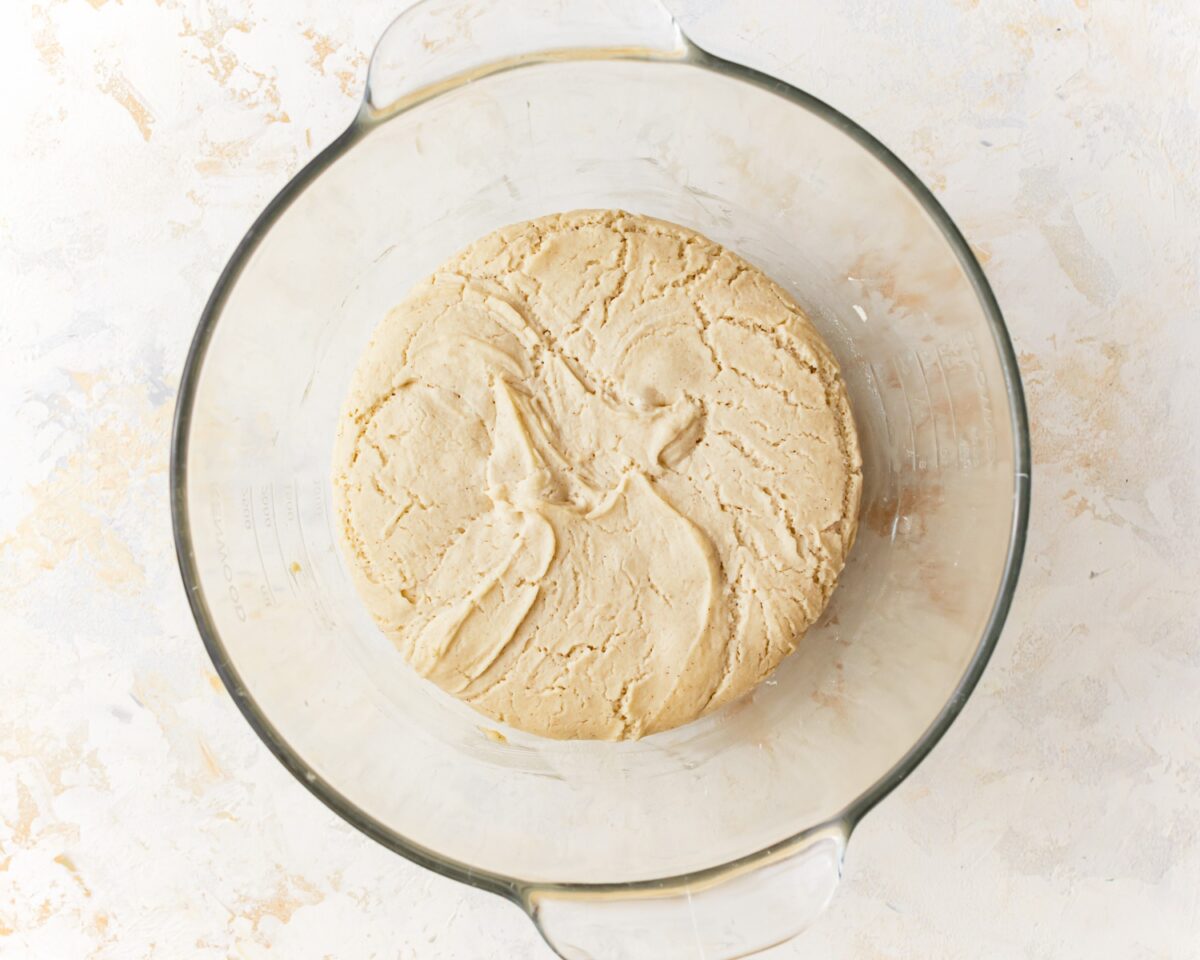
Let the dough rise: Transfer the sticky dough to a greased, oven-safe bowl. Cover it with plastic wrap and a kitchen towel, then place it in the warm (turned-off) oven to rise for 30 minutes.
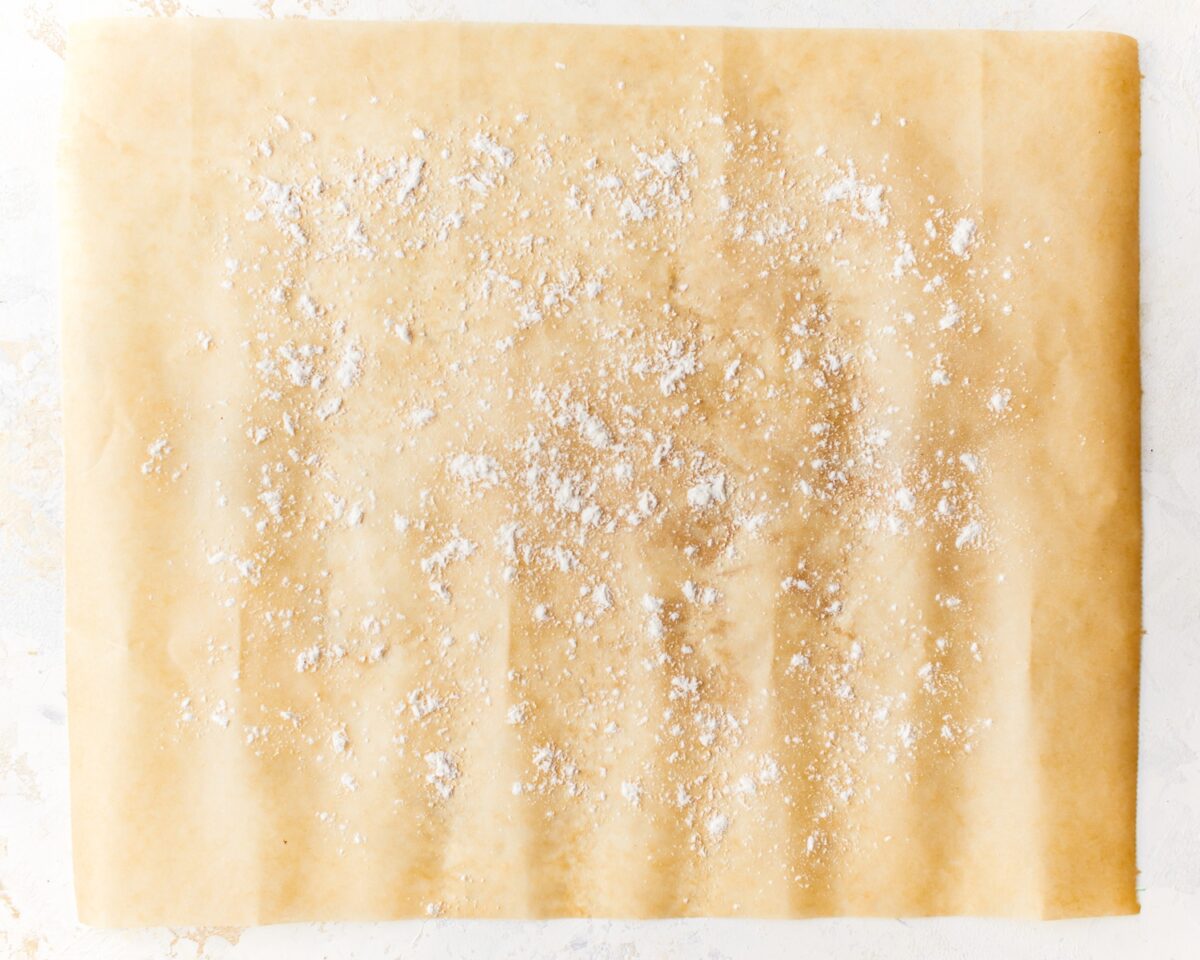
Prep the oven and parchment: After rising, remove the dough from the oven and preheat it to 425°F. Sprinkle 1 tbsp of gluten-free all-purpose flour onto a large sheet of parchment paper.
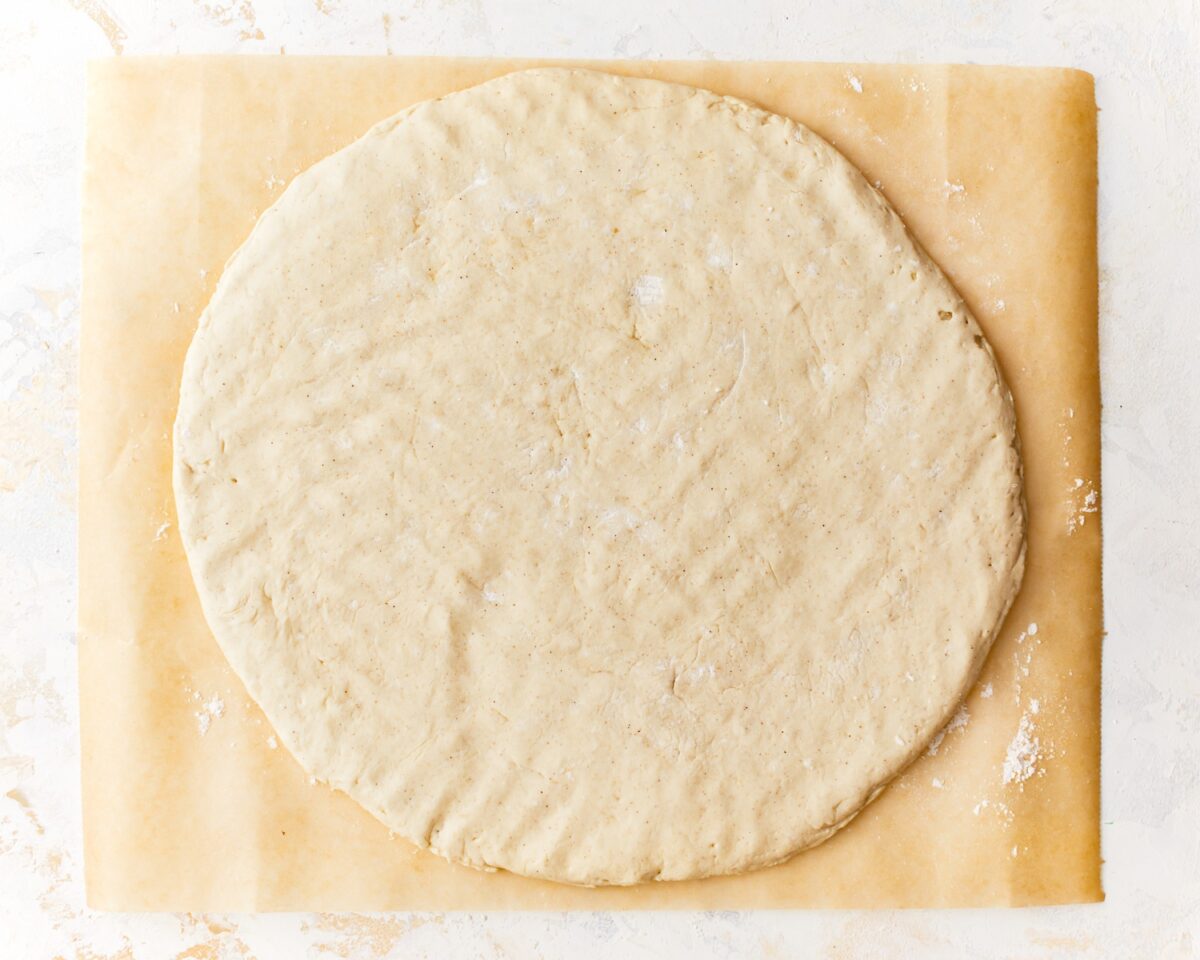
Shape the dough: Turn the bowl over onto the floured parchment. Sprinkle another 1 tbsp of flour on top of the dough. Using your hands, gently pat and push the dough outward from the center to form a 15″ circle. Use your fingers to press down around the edges to shape the crust.
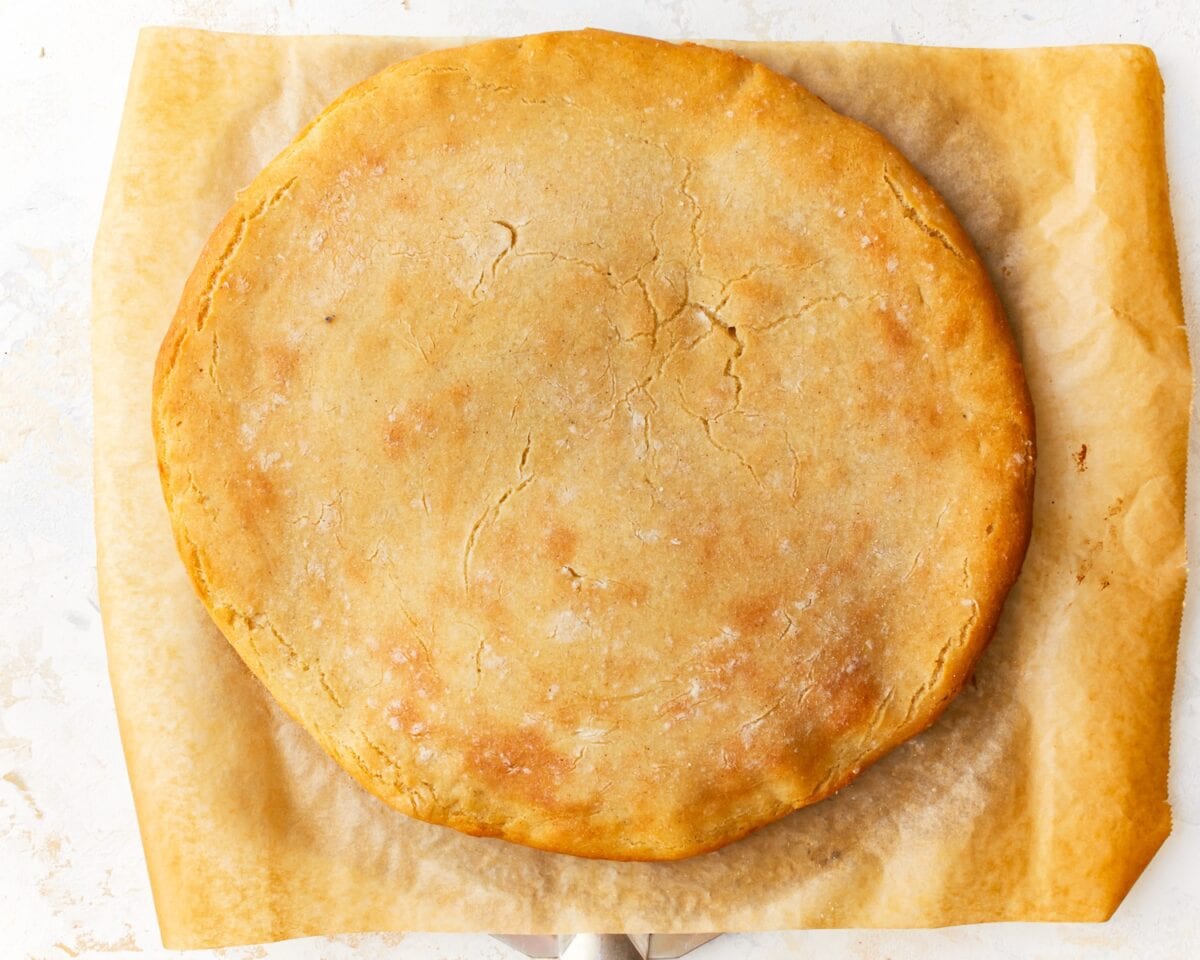
First bake: Place the parchment with the shaped dough onto a pizza pan or baking sheet. Bake for 15 minutes.
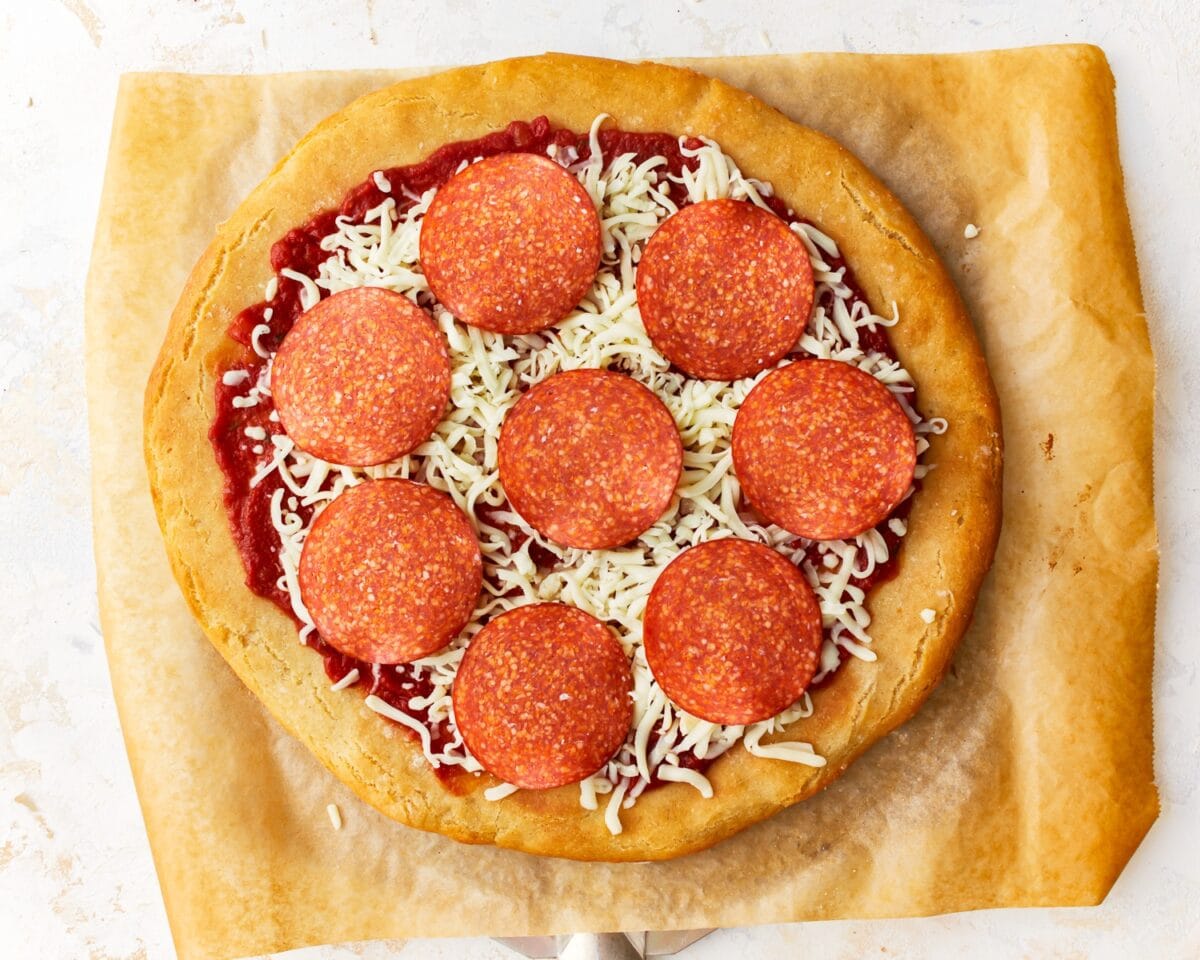
Add toppings: Remove the crust from the oven and add your gluten-free pizza sauce, cheese, and desired toppings.
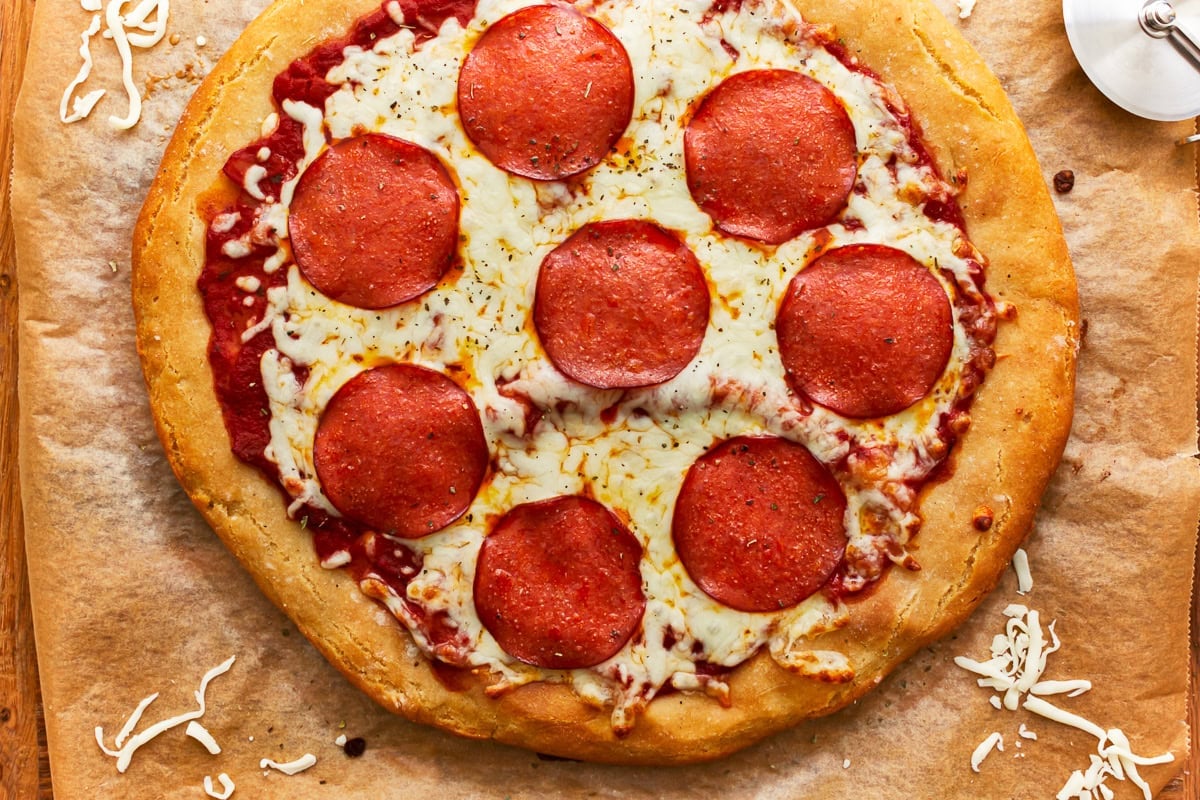
Final bake: Return the pizza to the oven and bake for another 10–15 minutes, or until the cheese is melted and the crust is golden brown.
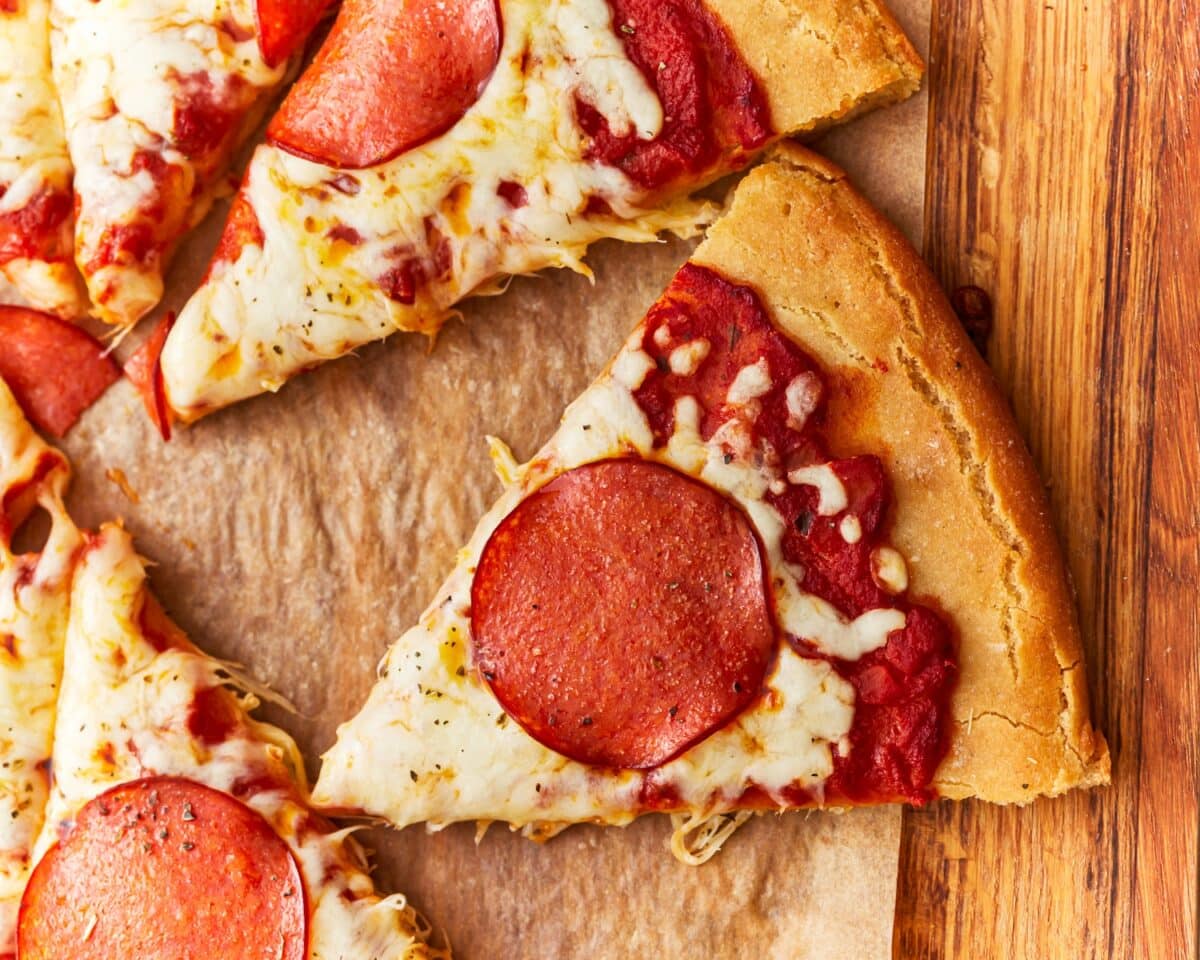
Freezing Instructions
I like to let the dough fully rise before I freeze it. Wrap the dough in plastic wrap and place it in a plastic freezer bag. The dough can be frozen for up to three months. Thaw the dough in the refrigerator overnight before you use it.
It is also easy to freeze and have a half-baked crust on hand, just like the packaged frozen pizza crust from the grocery store. Just follow the recipe instructions through the steps below (1-10).
Bake the crust for 15 minutes in a 425°F oven. Allow it to cool completely. Wrap the par-baked crust tightly with plastic wrap or foil made for freezing. The par-baked crust can be frozen for up to a month. When you are ready to make your pizza, add your toppings and bake for 10-15 minutes at 425°F.
Tips for Success
- Make sure to check and see if your brand of gluten-free flour is recommended for yeast baking. Not all brands of gluten-free flour are recommended for yeast baking.
- The best way to measure gluten-free flour is the “spoon & level” method. Using a spoon, scoop the flour into the measuring cup. After you’ve spooned the flour into the measuring cup, use the back of a knife to level off the top of the measuring cup. Scooping the gluten-free flour out of the bag could cause you to get too much flour.
- Check the expiration date of your instant yeast. You want to use fresh yeast for the best rise.
- The dough will be sticky, so I recommend flouring your hands to avoid getting the dough stuck to them.
- This gluten-free pizza dough recipe is dairy-free and egg-free. So you can easily add your favorite dairy-free or vegan cheese and toppings.



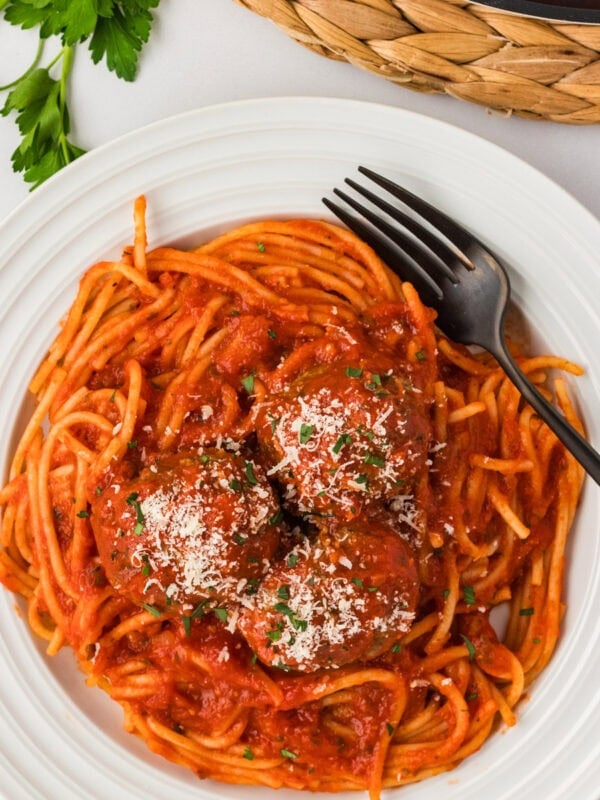
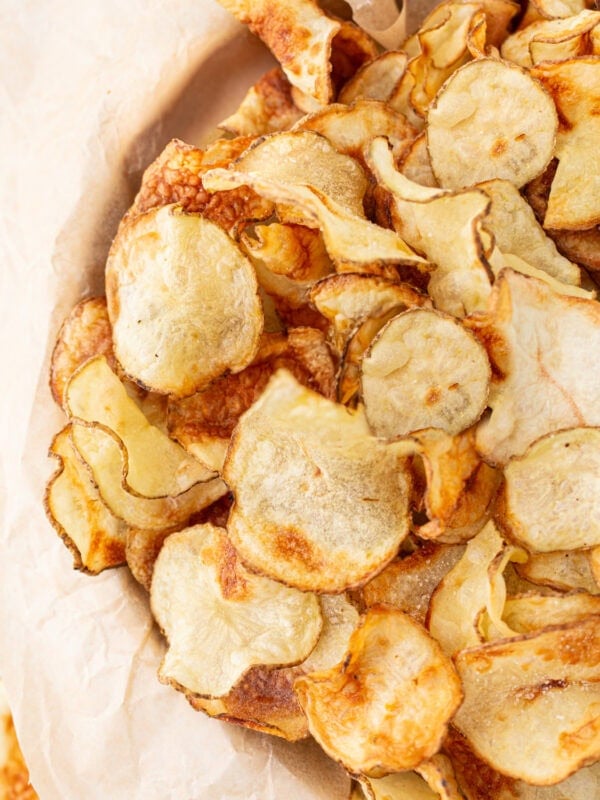
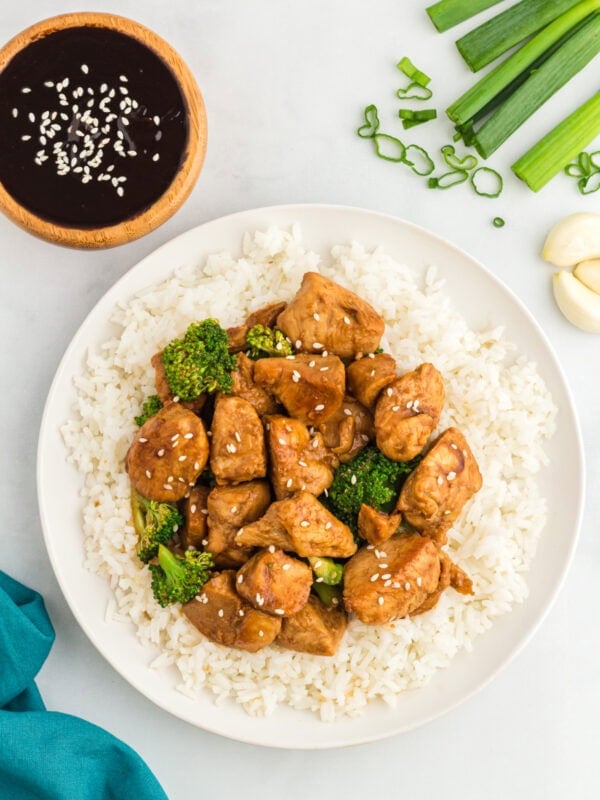
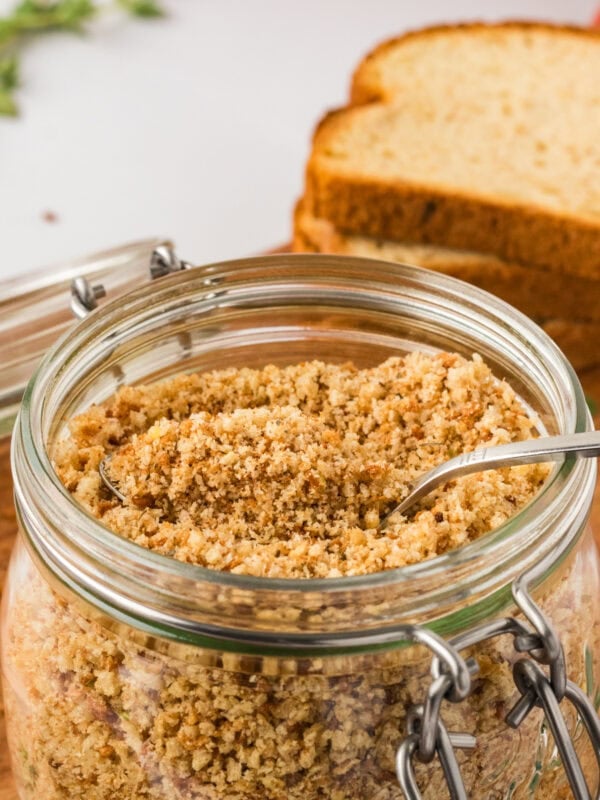






My kids haven’t had pizza in months since they were diagnosed as gluten and lactose intolerant. Since then, I have used your bread, cupcakes and cookies recipes, and they were a hit. I braved pizza last night. They loved it!!!!!!! Barely left a slice for me.
Thank you!
I am always making this recipe! I love it, it is by far the best pizza dough! I use the Bob’s redmill 1 to 1 baking flower and have no issues. it is a bit on the liquidity side, but it cooks great in the oven and tastes just as good.
I recommend your site to people who are looking for good gluten free recipes frequently
keep doing what you are doing. I love it!
Awful. 1st! Ingredients should be listed by weight. NOT volume.
This recipe does NOT make “dough” it makes a batter.
There are so many great Gluten-Free pizza dough recipes available. The author obviously didn’t bother to do her research.
Note to author: ALL Pizza Dough is Dairy Free!! Milk, eggs…. Dairy is never an ingredient in pizza dough!
Hi Travis, if you click on the “METRIC” button under the ingredients, it will give you the weight measurements– we offer both on all of our baking recipes. Furthermore, depending on the brand of GF flour you use, you will have different results. Different brands of GF flour use different blends of ingredients with varying absorbencies, so you may need to add more or less liquid depending on the brand. It sounds like you needed a bit less liquid for the brand you used. As stated, we recommend Pillsbury or Better Batter for the best results in this particular recipe, though adjustments may still need to be made (as with any baking recipe) depending on the ambient humidity of your kitchen.
The mention of dairy-free and egg-free is just a callout to those with allergies that this dough is safe to eat and can be used to make dairy-free pizza with dairy-free cheese. We try to be very transparent about which allergens are in our recipes for those with intolerances.
Putting the rudeness aside, I’d like to offer some notes to this commenter:
1) Whether someone goes by weight or volume in baking can largely depend on what area of the world they live in. Sure, going by weight has benefits, but there are areas that are accustomed to going by volume (…like most of the United States!).
2) Those familiar with gluten free baking won’t bat an eye at a gluten free dough being quite loose (or yes, even a batter) compared to gluten baking. What impacts this difference? The very mechanism of gluten itself! Maybe you should do some research on the nature of gluten free baking, since you accused the author of not doing her research.
3) The recipe is just fine. No need to attack the author because yours didn’t turn out.
4) NO, SIR. Not ALL pizza dough is dairy free. As one who is BOTH gluten AND dairy free, I can vouch for this several times over. I’ll give you two for starters. Store-bought example: Papa John’s gluten free pizza crust has dry milk in it. Homemade example: King Arthur’s gluten free flour pizza crust recipe, from the actual company, calls for buttermilk powder or dry milk. I always appreciate it when recipe authors are careful to make distinctions even if I already know whether the recipe is allergen this or that from the ingredient list.
Sam, thank you for this recipe!!
I liked this recipe. Best I’ve made from scratch!
This is a great, quick recipe! I made it with Bob’s Red Mill gf baking flour (blue bag). The dough seemed a little loose/soft while it was mixing so I added maybe 2 tablespoons of psyllium husk to help pull it together. It rose beautifully and made some delicious, crispy pizza crust with a great amount of chew. Now I just need some garlic butter at the ready to brush the crust when it comes out like we used to do when I worked at a pizza restaurant.
I am new to your site and also have 4 kids. We have been loving how down to earth and quick your recipes are. There are others with more ingredients/fancy flours/more steps that also turn out nicely but if I want something quick and still delicious I now know to check here, first!
This is another fabulous recipe! We have figured out that we like it better when we put it on a larger, rectangular pan, spreading the dough out even thinner. It seems to reheat better that way too. Not as doughy, but crunchy. Have made this recipe many times. Love that I can still have pizza!!!!!